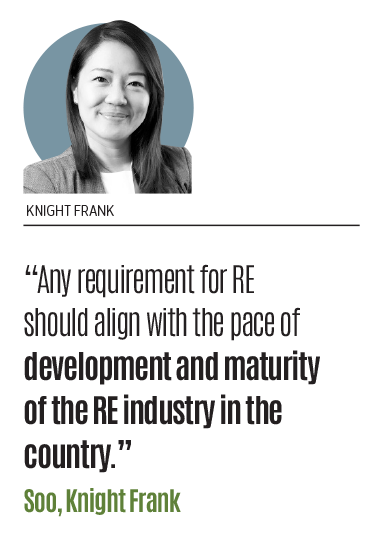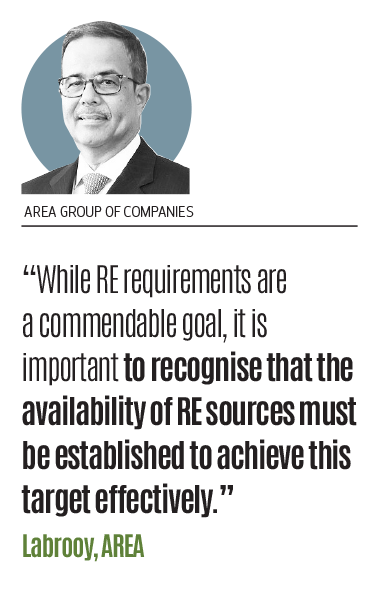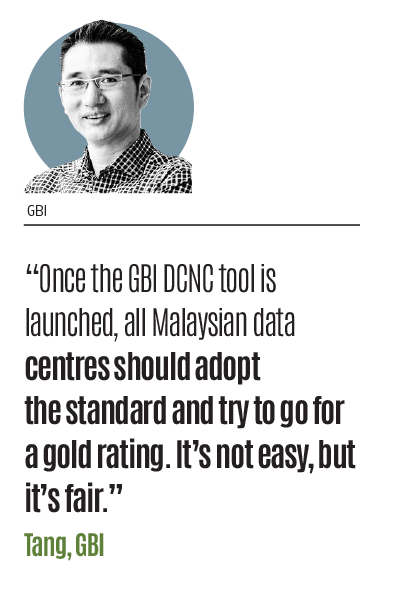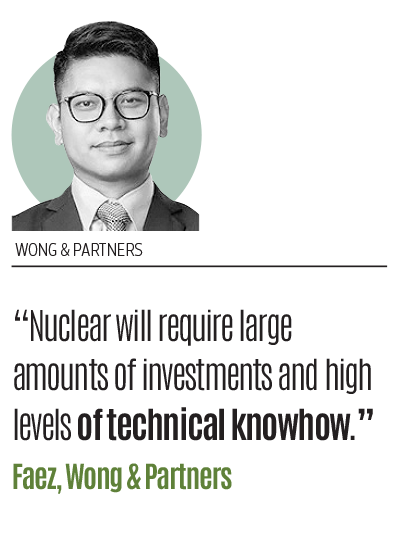This article first appeared in The Edge Malaysia Weekly on December 30, 2024 - January 12, 2025
Malaysia has found itself at the crossroads of economic progress and environmental sustainability with data centres. The industry brings in foreign direct investments while stimulating growth in construction, telecommunications and logistics. The data powerhouses also contribute to the digital transformation of the country by driving improvements in connectivity and internet speed.
There have already been RM99 billion in data centre investments announced in the last two years, with another RM147 billion in the pipeline, according to data from Malaysia Digital Economy Corporation.
Data centres come with significant environmental concerns, however, owing to its immense resource consumption. This is why the UN Trade and Development has called for governments to implement stricter regulations on energy and water consumption for data centres in its 2024 digital economy report.
Countries such as Ireland, Germany and Singapore have already introduced restrictions on new data centres in recent years to comply with stricter environmental requirements. For example, Singapore has specified that new data centres being built must have a power usage effectiveness (PUE) of 1.3 or below. (PUE is a standard efficiency metric for power consumption in data centres. The closer the PUE is to 1, the more efficient a data centre is.)
With this, the question of how to balance economic growth with sustainability has become a focal point for Malaysia.
For its part, the government has adopted a more selective approach to data centre investments. Treasury Secretary General Datuk Johan Mahmood Merican said a new investment incentive framework, which will use a “scorecard” approach, is slated to be launched by the middle of next year. Investments will be assessed on the ability to generate high-income jobs, linkages to local businesses and sustainability features, among others.
Meanwhile, the Ministry of Investment, Trade and Industry is in the process of finalising sustainable development guidelines for data centres.
As 2025 approaches, ESG speaks to industry experts on how Malaysia can balance its priorities.
Impose sustainability requirements on data centres
Sustainability requirements that are imposed on data centres are not a deterrent to growth or investments in the country, says Chelwin Soo, director of land and industrial solutions at Knight Frank Malaysia. This is because they align with the long-term goals of many data centre operators, which makes them an attractive feature rather than a barrier.
But the government needs to ensure the availability of a robust renewable energy (RE) infrastructure and landscape before introducing requirements or measures that will affect the data centre industry, Soo says.
“Any requirement for RE should align with the pace of development and maturity of the RE industry in the country. Currently, the RE industry in Malaysia is still limited and in its early stages,” she says.
Countries such as Germany are requiring data centre operators to source half of their energy consumption from unsubsidised RE sources. Soo says the same approach can be considered in Malaysia when RE sources in the country are mature.
Datuk Stewart Labrooy, executive chairman of AREA Group of Companies, says: “While RE requirements are a commendable goal, it is important to recognise that the availability of RE sources must be established to achieve this target effectively. Solar energy, although a popular choice, requires significant land area and is not as environmentally flawless as it is perceived to be. Planning for incorporation of solar energy onto the grid is also a key part of the whole process.”
AREA, a real estate private equity firm, acquired 30 acres in Delapan to develop the first phase of its hyperscale data centre called AREA Data Centre Campus (ADCC). AREA has also signed an option to acquire another 126 acres in the same location for the second phase of the project.
Meanwhile, some data centres have already committed to sourcing a percentage of their energy from RE to comply with their own environmental, social and governance-related requirements. For instance, ADCC has identified solar farms that will be developed on demand.
To further facilitate the adoption of RE for data centres, the government and industry players can co-invest in RE infrastructure such as solar farms and the grid to ensure reliable supply, says Labrooy. He also calls for tax rebates and subsidies for data centres that achieve RE adoption milestones.
Meanwhile, Soo notes that time-of-use pricing and demand-based tariffs are some approaches that have been taken by other countries to address the challenge posed by data centres and their intensive resource consumption.
Faez Abdul Razak, partner of finance and projects practice group at Wong & Partners, says: “From what we understand, data centres do not currently pay higher rates for utilities compared to other commercial businesses with the same electricity demand. In fact, one of the contributing factors for the boom in data centre development in recent years is the electricity and water tariffs in Malaysia which are competitive.
“Instead of imposing higher utility rates, a more equitable approach would be to require data centre operators to incorporate better efficiency and environmentally friendly measures into their operations via innovation and firm commitments to minimise the use of electrical power and enhance sustainable-related efforts over the lifespan of the data centre operations.”
Thirsty data centres
Water is also critical for data centre operations. As the number of data centres in the country grows, the need for a reliable and sustainable water supply will only increase. Incorporating desalination as an alternative water source into the broader infrastructure could ensure that data centres in Malaysia have the necessary resources, says Labrooy. Desalination is the process of removing salt from seawater, which then makes it suitable for industrial use.
“One of our plans is to put a water treatment plant within ADCC and take the water and supply it to our tenants. That not only gives comfort to our clients that there is enough water within the area but it creates a revenue stream for us,” Labrooy adds.
To enable a more holistic planning process, the Green Building Index (GBI) Data Centre New Construction (DCNC) tool is set to be launched in January, which will provide data centres with a roadmap towards sustainability, says Tang Chee Khoay, chair of the working committee for the development of a data centre tool under GBI.
The voluntary tool provides credits to a data centre for its performance in energy efficiency, water efficiency, embodied carbon and others from an industry-agreed performance benchmark. Thereafter, a data centre will be labelled as platinum, gold, silver or certified from the combined credits received. This will be a reference for how well the data centre is doing in terms of sustainability.
“Once the GBI DCNC tool is launched, all Malaysian data centres should adopt the standard and try to go for a gold rating. It’s not easy, but it’s fair. This will, in turn, address issues on energy, water and waste,” says Tang.
“Data centres that get a gold rating are telling the industry that they are a market leader using the most advanced technology [available]. Getting to platinum would be a shining star. I would say data centres that achieve this rating are really pushing the boundaries of innovation.”
Is nuclear the way to go?
Nuclear energy could be a way to reduce the country’s dependence on fossil fuels and diversify its energy mix, says Faez Abdul Razak, partner of the finance and projects practice group at Wong & Partners. Tech giants such as Microsoft Corp and Amazon Web Services are already looking at nuclear energy to power their data centres abroad.
Economy Minister Rafizi Ramli said the federal government would incorporate policies for the adoption of nuclear energy in the nation’s energy mix under the 13th Malaysia Plan, which is set to be implemented from 2026 to 2030.
Nuclear should be considered as an alternative and additional power source, especially to replace some of the older coal-fired power stations, says Dr Ong Kian Ming, pro vice-chancellor for external engagement at Taylor’s University Malaysia. He says discussions will have to start now because the regulatory structure will take some time to put in place.
Nonetheless, disposal of nuclear waste and potential risks associated with nuclear power must be addressed.
“This will require large amounts of investments and high levels of technical know-how, which includes a skilled workforce capable of building, maintaining and operating the infrastructure,” says Faez.
Save by subscribing to us for
your print and/or
digital copy.





